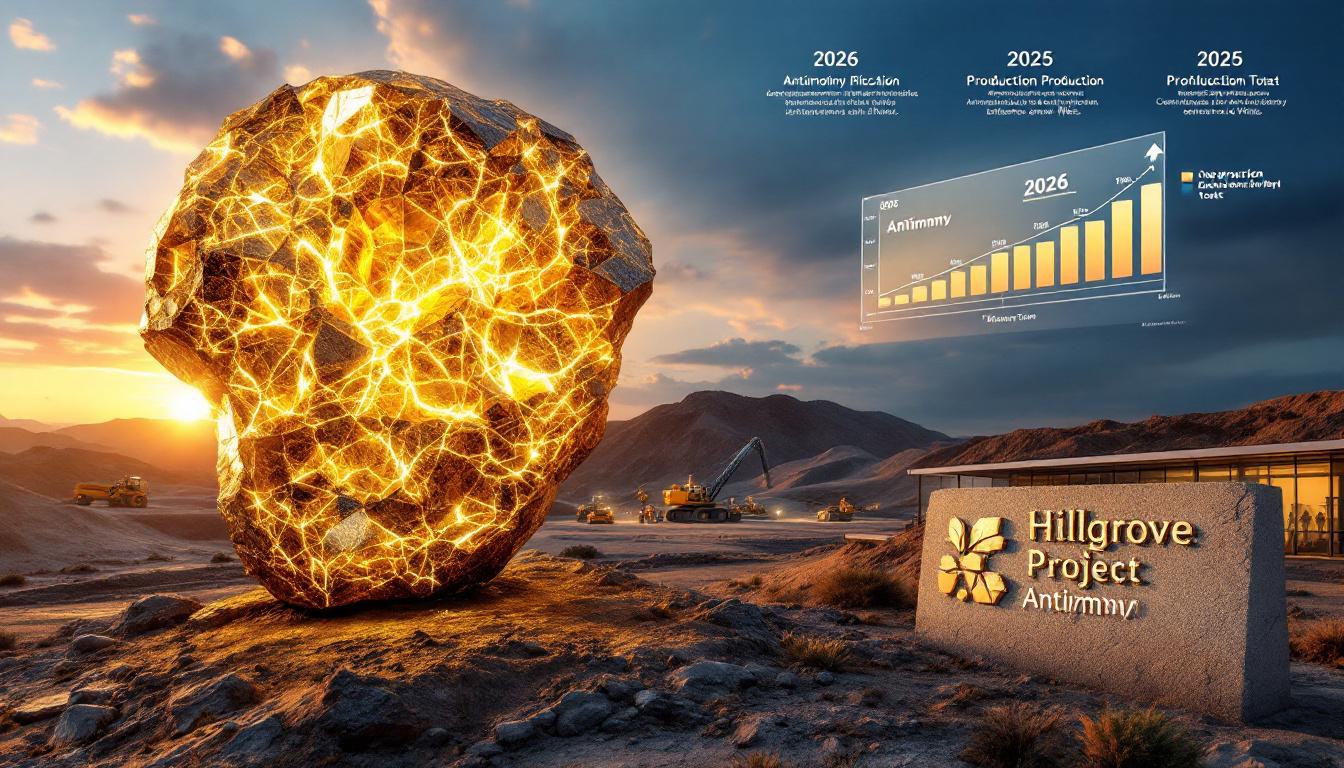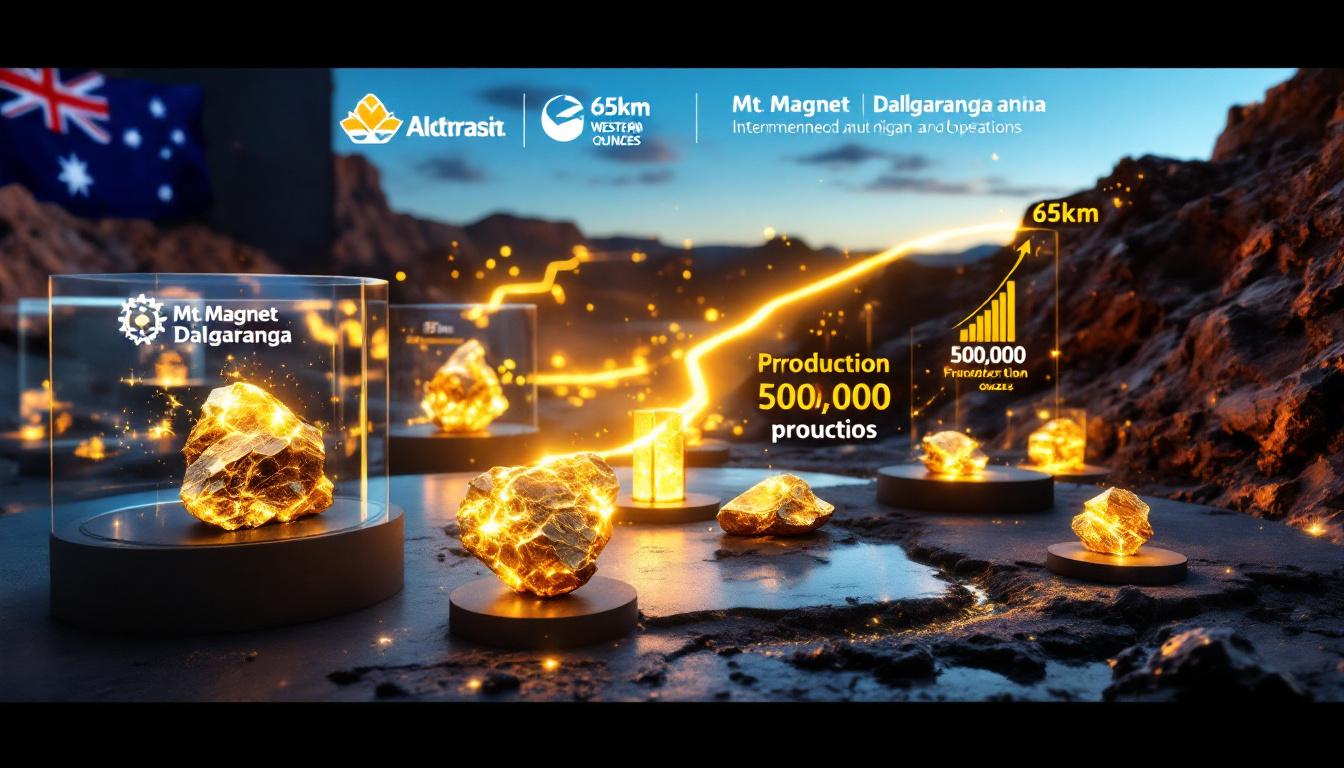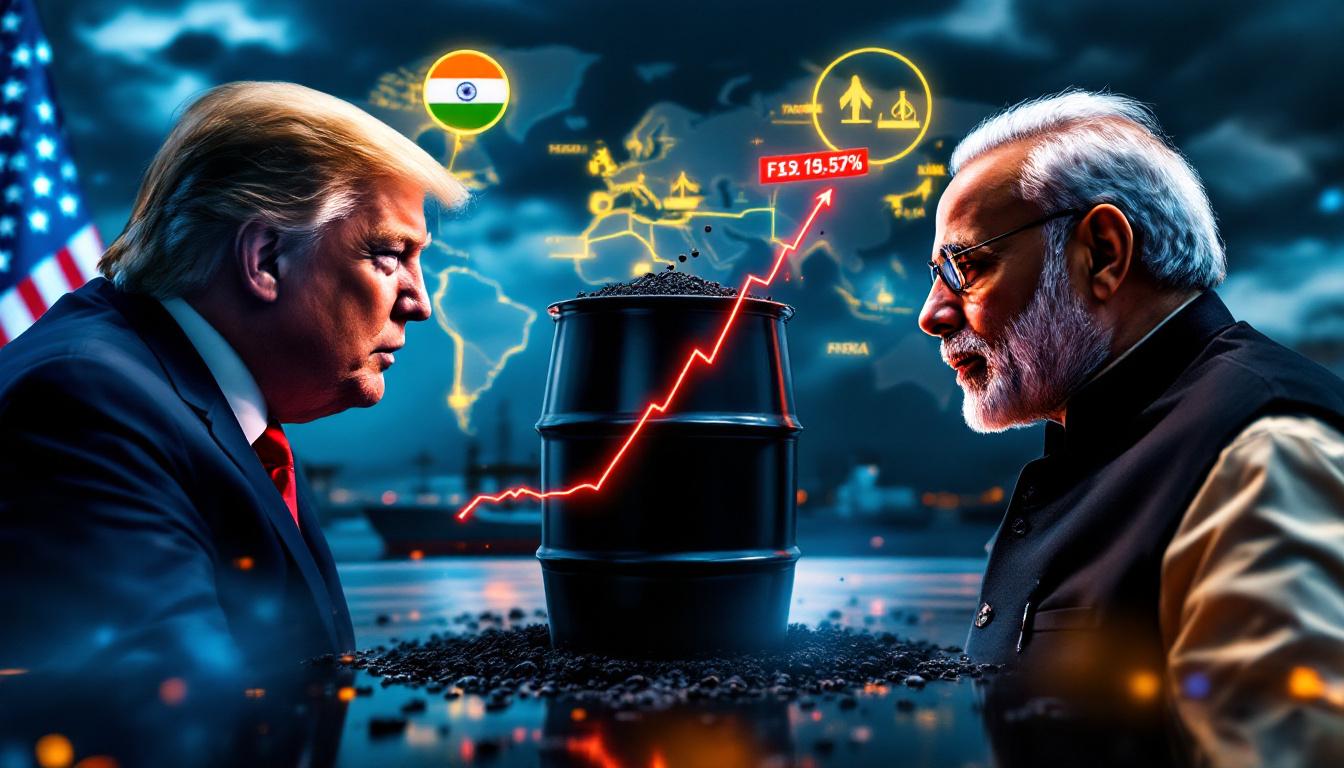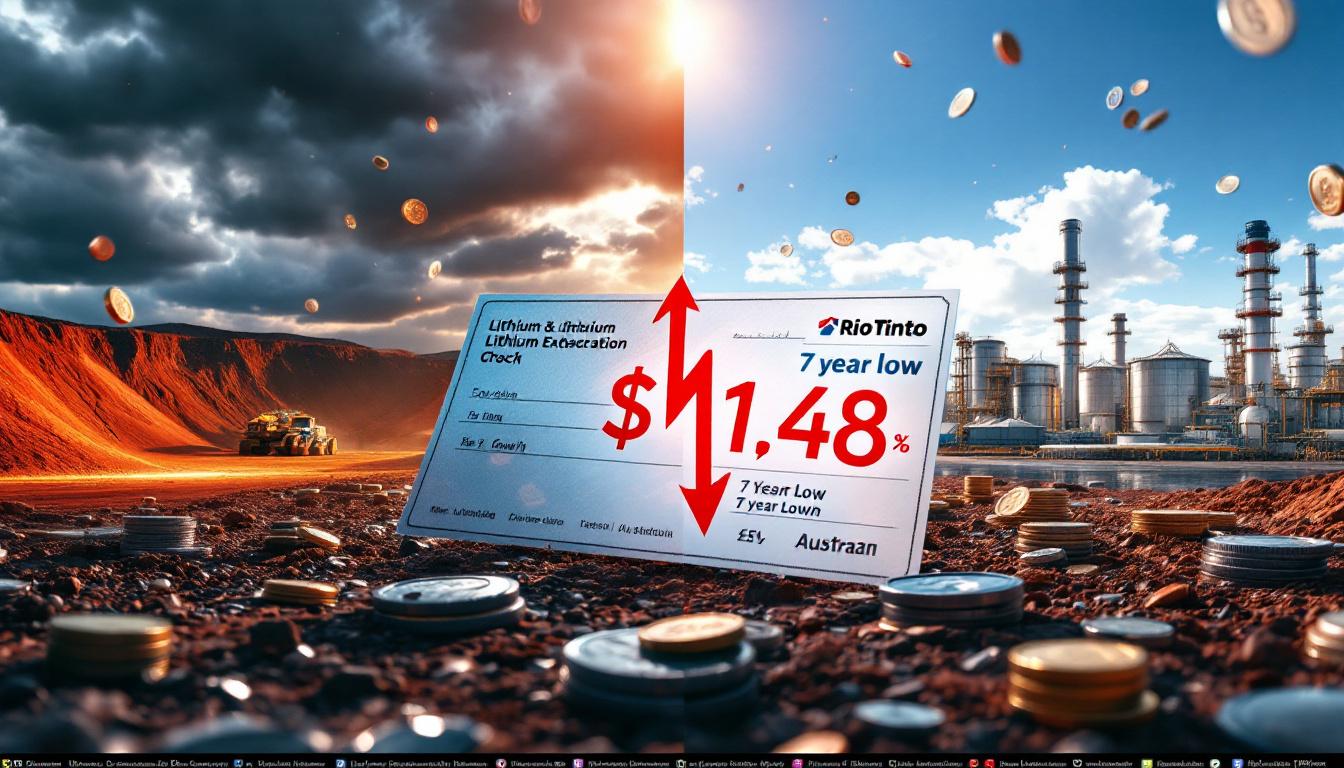Mining Giants Rally: How China's Property Market and Copper Spike Drive Stock Gains
The recent surge in share prices of major mining companies extends beyond metal market dynamics alone. While copper's meteoric rise has garnered headlines, a complex interplay of factors is driving mining stocks to new heights. At the center of this rally sits an unexpected catalyst: renewed optimism surrounding China's property sector.
Mining giants including Anglo American and Glencore climb on China property hopes and copper spike, alongside Rio Tinto which has seen significant share price appreciation as investors respond to a confluence of positive signals. This unique market movement demonstrates how deeply interconnected global commodity markets have become with China's economic health.
Understanding the Recent Mining Stock Rally
The mining sector's current upswing represents more than a straightforward response to rising commodity prices. According to mining analyst John Meyer at SP Angel, "The mining bounce today was arguably as much about China as it was about copper." This insight reveals the dual nature of the current rally, where both metal price dynamics and macroeconomic factors are working in tandem.
What makes this rally particularly notable is the breadth of companies benefiting. Firms with diversified portfolios spanning both copper and iron ore & China demand have seen the strongest gains, highlighting how investors are responding to multiple positive indicators rather than a single commodity trend.
"Markets are increasingly recognizing that China's property sector stabilization could drive sustained demand for industrial metals beyond just the current copper spike," notes Meyer, pointing to the structural importance of Chinese construction activity for global mining firms.
The timing of this rally also coincides with seasonal patterns that typically see reduced activity in construction sectors, making the strength of the upward move even more significant as a potential indicator of changing market fundamentals.
What's Behind the Copper Price Spike?
Trump's Tariff Proposal Impact
Former US President Trump's proposal for a 50% import tariff on copper has sent shockwaves through metal markets globally. This announcement triggered a dramatic price reaction that rippled through trading desks worldwide:
- Copper prices surged to nearly US$12,500 per tonne on the US Comex market
- Prices have since stabilized around US$12,200 per tonne
- The Comex-to-LME three-month premium reached an unprecedented US$2,700 per tonne, representing a 28% premium
This extraordinary price movement reflects how Trump tariff implications can dramatically reshape commodity markets overnight, creating both risks and opportunities for mining companies with significant copper exposure.
Market Anticipation and Adjustment
According to Panmure Liberum analyst Tom Price, "Markets have already priced in most of the now-realized tariff risk since Trump first mentioned the policy back in March 2025." This forward-looking behavior by traders explains why copper prices rose approximately 10% on Tuesday rather than the full 50% that might be expected from such a significant tariff announcement.
This market anticipation demonstrates the sophisticated way commodity traders incorporate policy signals into pricing well before implementation, creating a more measured response when announcements are formalized.
US Copper Supply Vulnerabilities
The tariff proposal has highlighted critical vulnerabilities in US copper supply chains that many industry observers had previously underestimated:
- The US typically imports 56% of its refined copper needs
- Annual copper imports are valued at US$11-12 billion
- Primary import sources include Chile and Canada, with China playing a smaller but still significant role
- Forecasts suggest US copper demand may fall 15% year-on-year in 2025 due to rising local prices
This supply chain exposure creates both challenges and opportunities. American copper producers stand to benefit from tariff protection, while manufacturers using copper inputs face potential cost increases that could reshape industrial competitiveness.
Why Is China's Property Market Driving Mining Stocks?
Recent Chinese Property Market Developments
China's property sector, which has struggled since the Evergrande crisis began unfolding in 2021, is showing signs of potential policy support that could rebalance the market:
- Shanghai property equities surged on rumors of a high-level meeting next week specifically focused on revitalizing the sector
- The China real estate index climbed 11%, reflecting renewed investor confidence
- Analysts are drawing parallels to a 2015 conference that supported urban planning and infrastructure initiatives
These developments matter tremendously for mining companies because China's property and construction sectors consume approximately 40% of the country's steel output and significant quantities of copper for electrical systems, plumbing, and other applications.
Xi Jinping's Economic Stance
Chinese President Xi Jinping made a notable statement addressing industries "currently caught in a wave of anti-overcapacity leading to rising prices," signaling potential policy shifts that could benefit resource-intensive sectors including steel and cement production.
This high-level acknowledgment of market imbalances suggests Beijing may be preparing to moderate its previous stance on industrial overcapacity, potentially allowing increased production that would consume more raw materials.
Positive Market Indicators
Several technical indicators suggest improving conditions in China's industrial and property sectors beyond just the headline news:
- Coking coal futures have risen to their highest level since May 2025
- Steel inventories are declining in China, indicating better-than-expected demand during a traditionally weak seasonal period
- Chinese high-yield bond issuance increased by 23% in Q2 2025, reflecting improved financial conditions and expectations of economic recovery
- Iron ore prices jumped 4% overnight, with the Singapore 62% Fe index climbing above $104 per tonne
This constellation of positive indicators across related markets provides a more robust foundation for investor confidence than any single metric could offer, according to a recent analysis from Proactive Investors.
How Are Copper Markets Responding to Supply Constraints?
Supply Chain Pressures
With US refined copper supply tightening and exchange stocks depleted outside the US, pressure is mounting on domestic mined and scrap sources to fill the gap. This supply constraint is contributing to price volatility and creating opportunities for mining companies with significant copper operations.
The current market dynamic has created a notable divergence between regional copper markets:
- North American premium-grade copper commands significantly higher prices
- European and Asian markets face potential oversupply if US imports decline
- Recycling operations are scaling up activity in response to higher prices
- New mining projects are receiving renewed attention from investors
These supply chain adjustments will likely require months to fully stabilize, creating a period of continued price discovery and volatility. Recent reports suggest US tariffs affect copper markets globally, not just within North America.
Strategic Positioning of Major Mining Companies
The market rally has particularly benefited mining giants with diversified portfolios spanning both copper and iron ore:
- Anglo American PLC has seen significant share price appreciation driven by its copper assets in Chile and Peru alongside its iron ore operations
- Glencore's stock has climbed on the positive outlook for both copper and Chinese demand, leveraging its trading and production businesses
- Rio Tinto benefits from its position as a major iron ore producer while also maintaining exposure to copper markets
This diversification provides these companies with resilience against single-commodity price swings while allowing them to capitalize on broader economic recovery trends. Industry experts anticipate mining consolidation trends to continue as companies seek to optimize their portfolios.
What Does This Mean for Mining Sector Investors?
Short-Term Market Dynamics
The combination of copper price spikes and improving Chinese property market sentiment creates a potentially favorable environment for mining stocks in the near term. However, investors should consider several key factors:
- Tariff implementation timeline: The proposed copper tariffs would likely face legal and political hurdles before implementation
- Chinese policy execution: Rumors of property sector support must translate into concrete measures
- Supply response dynamics: Higher prices will inevitably stimulate increased production and substitution effects
- Technical price patterns: Copper's rapid rise may face correction if speculative positions unwind
Investors with shorter time horizons may need to monitor these factors closely to navigate potential volatility.
Long-Term Strategic Considerations
For long-term investors, these developments highlight the importance of understanding the interplay between:
- Global trade policies and tariffs: The increasing use of tariffs as economic tools creates both risks and opportunities
- China's economic management and property market health: The sustainable trajectory of China's property sector remains the single most important demand driver for many industrial metals
- Supply constraints in critical metals: Structural underinvestment in new mining capacity during the past decade limits supply elasticity
- Energy transition demands: Copper's role in electrification creates a long-term demand floor regardless of property market fluctuations
- Diversification across different commodities: Companies with exposure to multiple metals may offer more balanced risk profiles
These strategic considerations suggest investors should evaluate mining companies not just on current production metrics but also on their ability to navigate these complex structural trends. According to Resources Rising Stars, this has fueled speculation about potential mega-mergers in the sector.
FAQ: Mining Stocks and Market Influences
How might Trump's proposed copper tariffs affect global mining companies?
The proposed 50% tariff would likely create a two-tier pricing system, with higher prices in the US market and potential oversupply in other markets. Mining companies with US production facilities could benefit, while those relying heavily on exports to the US may face challenges. Additionally, the tariff could accelerate copper substitution in some applications, potentially reducing long-term demand.
What indicators should investors watch to gauge China's property market recovery?
Key indicators include:
- Property sales volumes and transaction values in tier-1 and tier-2 cities
- Housing starts and completion rates compared to historical averages
- Steel consumption rates as reported by major producers
- Iron ore import levels and port inventory changes
- Policy announcements from high-level government meetings focused on economic stimulus
- Land auction prices and participation rates by developers
- Financing availability for property developers as reflected in bond yields
These metrics provide a more comprehensive view than headline price movements alone.
Why do iron ore prices matter for copper-focused mining companies?
Many major mining companies have diversified portfolios that include both copper and iron ore. Additionally, both commodities are influenced by Chinese industrial and construction activity, making them correlated indicators of overall economic health in the world's largest metals consumer.
Iron ore price movements also provide insight into steel production expectations, which correlates strongly with broader industrial activity that drives copper consumption. For investors, understanding these interconnections helps contextualize price movements in individual commodities.
How might US copper demand change in response to tariffs?
Analysts forecast a potential 15% year-on-year decline in US copper demand for 2025 as higher prices drive:
- Material substitution (aluminum, plastic alternatives)
- Efficiency improvements in manufacturing processes
- Possible manufacturing relocation to avoid tariff impacts
- Increased recycling and scrap utilization
- Delayed infrastructure projects with high copper content
These adaptations could create longer-term structural changes in global copper markets beyond the immediate price impact, potentially reshaping trade flows and investment patterns in the mining sector. Recent copper price predictions suggest ongoing volatility in the market as these forces play out.
Ready to Capitalise on the Next Major Mineral Discovery?
Don't miss potentially transformative ASX mining opportunities driven by copper price spikes and China's property sector recovery. Gain immediate insights into significant mineral discoveries with Discovery Alert's proprietary Discovery IQ model by visiting our dedicated discoveries page to see how historic discoveries generated substantial returns.




